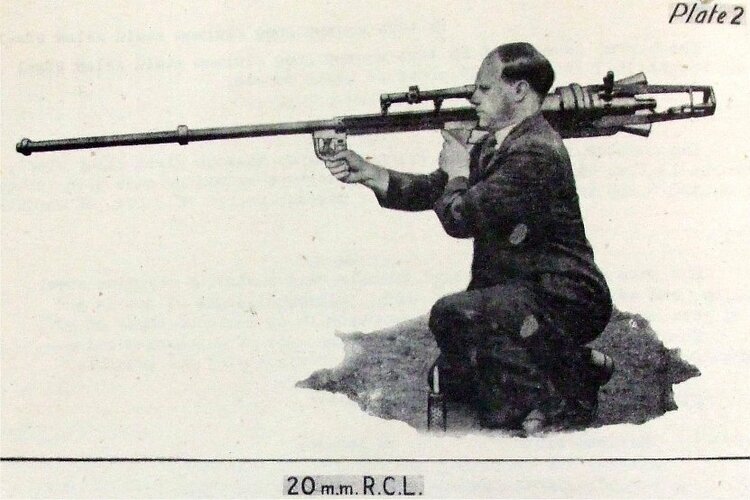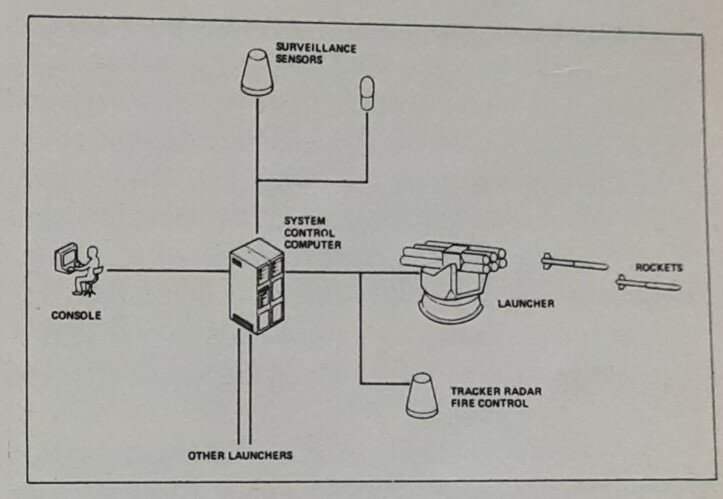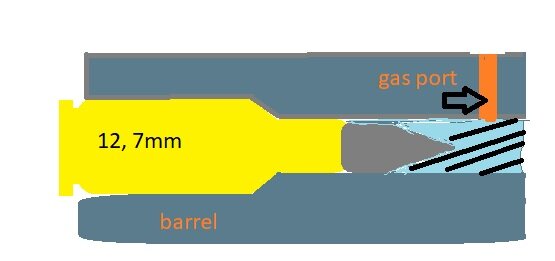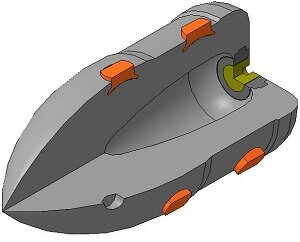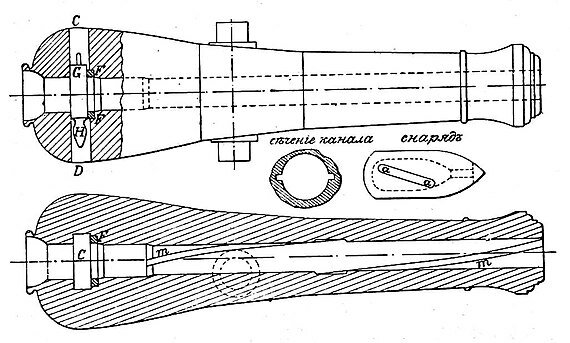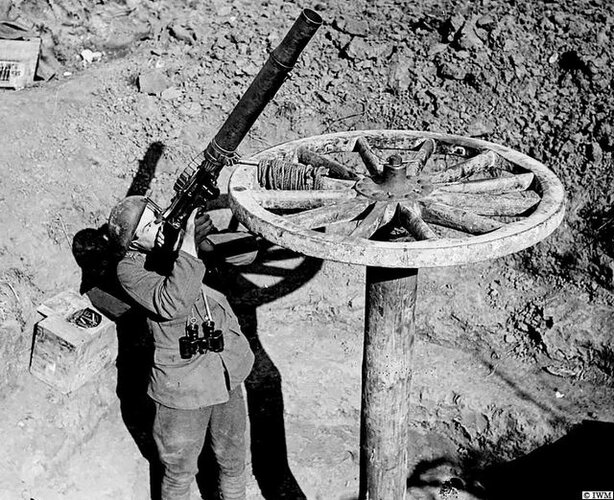You are using an out of date browser. It may not display this or other websites correctly.
You should upgrade or use an alternative browser.
You should upgrade or use an alternative browser.
Unguided anti-aircraft weapons
- Thread starter cluttonfred
- Start date
- Joined
- 16 April 2008
- Messages
- 9,604
- Reaction score
- 14,491
I'm just wondering where the gunpowder gases will come from the rocket?
There are a pair of nozzles in the base.
My very rough guess is that this is more of a low-pressure gun firing rocket-assisted rounds. So there is a gunpowder charge in the case that ejects the projectile and then the rocket accelerates it and spins it up.
similar to rpg-7I'm just wondering where the gunpowder gases will come from the rocket?
There are a pair of nozzles in the base.
My very rough guess is that this is more of a low-pressure gun firing rocket-assisted rounds. So there is a gunpowder charge in the case that ejects the projectile and then the rocket accelerates it and spins it up.
- Joined
- 16 April 2008
- Messages
- 9,604
- Reaction score
- 14,491
similar to rpg-7I'm just wondering where the gunpowder gases will come from the rocket?
There are a pair of nozzles in the base.
My very rough guess is that this is more of a low-pressure gun firing rocket-assisted rounds. So there is a gunpowder charge in the case that ejects the projectile and then the rocket accelerates it and spins it up.
I think this probably had a closed breech, unlike an RPG. But that's only a guess.
jsport
what do you know about surfing Major? you're from-
- Joined
- 27 July 2011
- Messages
- 7,732
- Reaction score
- 5,750
say what military Light Gas Gun?does anyone know anything about this 35mm anti aircraft missile cannon developed by an american firm in the 70's.
Way earlier. Looks like late 1950s.

38x310 Cased T225 Rocket Round
What a beautiful, sectioned and off the charts fascinating item. Blown away. Looking forward to learning more about this one. Jason PS: WOW!forum.cartridgecollectors.org
As promised … here is a pic of the “Light-Gas Gun” round specificaly for use at "Very High Altitudes. A complete RDT&E (Research Development Test & Evaluate) program was done. This round was in my collection along with the Micro-Missile until I gave them to Bill Woodin. Ther is a very fine document by the AF air weapon program director, Mr. Dale Davis, that discusses this and other experimental rounds. The acdtual “projectile” is the tiny tip of the aluminum sabot. It weight about 6 grams. Hope this is interesting to some of you folks.

According to German-Navy.de, a version of the Föhn AA rocket system was used on some R-boats (small coastal patrol gunboats / minehunters) in the latter part of the war, as an anti-strafing-aircraft weapon. The pintle mount was at the stern, with 360 degree rotation.Föhn was a anti-aircraft, unguided rocket system that had 35 racks firing a 7.3cm Raketen Sprenggranat, spin-stabilized rocket. The racks could be elevated and traversed via a simple mechanism with a rudimentary sight.
A few of them got into battle, some being used by the 900th. Flak Training & Testing Battalion that had some installed along the Rhine to defend important bridges. There was also a mobile version, mounted on a two-wheeled trailer. More often than not, those used in combat were in the ground-to-ground bombardment role rather than their intended purpose.
R-Boat Technical Data
The German Kriegsmarine, R-Boat Technical Data, Mine Hunter, R-Boat, Minenräumboot
www.german-navy.de
The provided information does not make clear how many rockets/rails the R-boat launchers had.
The cited source is:
| Die Deutsche Kriegsmarine 1935-1945 Vol I-IV | Breyer, S. & Elfrath, U. & Koop, G.; Weltbild Verlag 1994 (Volume I-III: German/English) |
Last edited:
Grzesio
ACCESS: Secret
Naval launchers were 35-shot too, although they apparently could fire rockets in two salvos of 20 and 15, instead of only one as in the land variant.The provided information does not make clear how many rockets/rails the R-boat launchers had.
jsport
what do you know about surfing Major? you're from-
- Joined
- 27 July 2011
- Messages
- 7,732
- Reaction score
- 5,750
from the same IAA forum thread
Lew
Oct '10
1SFG, Many years ago when I worked at Eglin AFB, three of my group moved into a basement office in the Armament Lab and behind a filing cabinet they found a 20mm case with an aluminum plug for a bullet. I asked Jack Robbins what it was and was and was told it was the Light Gas Gun Cartridge and he described how it worked. he also told me the top was missing so I went down to the basement office, and sure enough, in a drawer was the tip. The bullet was all aluminum except for the steel insert in the tip. I made a display out of it for a Chicago show and then passed it on to Bill Woodin. It is keeping your LGG cartridge company in a drawer today. I use to have photos of the round and will post them if I can find them.
Cheers,
Lew
1SFG
Oct '10
Thank you Lew, I have an official AF document that discusses the development and has a schematic diagram of the LGS. It is really sad that so much of Mr. Dale Davis’s collection just vanished or was strewen about. I spent about the last 20yrs looking and have recovered about 50 or so items that are shown in his “Final Report” all are with Bill Woodin. Again Thanks
The British system ...
I know this is a long shot, but I'm actually doing some work on British AA rockets of the Second World War. One problem I've found is the lack of accounts of AAD's in use, mainly as they were used by the merchants, which seems to have resulted in less complete, documented or preserved ships logs. Equally, they didn't seem to get many hits, but did force the German aircraft to break off and spoil their attack run.
Would you happen to have details of the ship in the drawing? Perchance a name and date of the incident, so I can go hunting for it and see what else I can turn up.
- Joined
- 6 September 2006
- Messages
- 4,833
- Reaction score
- 9,451
A bit late but better than never.I have a vague recollection of an 1970/80's British system called Seafox, which IIRC was a unguided rocket system intended as CIWS (the rockets were possibly hypersonic).
I would be grateful for any additional information you gents may have.
Regards.
It was a 1978 project between Hunting, Ferranti, Marconi and VSEL. Marconi was developing the radar and the proximity fuze.
There was no real data on the rocket itself, presumably a fairly standard FFAR?
Attachments
- Joined
- 23 August 2011
- Messages
- 1,610
- Reaction score
- 4,771
Was that around the timeframe that CRV-7 became the UK rocket of choice or was it too early, being more the Matra/SNEB side of things?It was a 1978 project between Hunting, Ferranti, Marconi and VSEL. Marconi was developing the radar and the proximity fuze.
There was no real data on the rocket itself, presumably a fairly standard FFAR?
- Joined
- 25 July 2007
- Messages
- 4,299
- Reaction score
- 4,196
Was that around the timeframe that CRV-7 became the UK rocket of choice or was it too early, being more the Matra/SNEB side of things?
Still Matra SNEB, I believe. First RAF operational use of CVR7s was during the 1991 Gulf War. JagDet fired 32 x CRV7 rockets from its Jaguar GR.1s' 19-round pods (disposable Canadian LAU-5003B/As).
Scott Kenny
ACCESS: USAP
- Joined
- 15 May 2023
- Messages
- 11,599
- Reaction score
- 14,281
Seems an awfully short life.Some notes on Genie's motor. Interestingly the entire aft section of the missile, including fins, was provided as a unitary motor assembly:
And for disposal:
The more fun way to dispose of a rocket motor is to run a length of detcord up the burn channel and boom.
Love Wild Arms stuff. I need to build one of those. (much cheaper to build your own here in the US and file the tax paperwork than to mess with the manufacturing side of it. Manufacturing FFL is something like $10k/yr for the "Special Occupational Tax" for machine guns and destructive devices!)A recently released video showing someone firing a replica of the WWII 'Fliegerfaust' weapon.
View: https://www.youtube.com/watch?v=5fskM6iUSbA
Scott Kenny
ACCESS: USAP
- Joined
- 15 May 2023
- Messages
- 11,599
- Reaction score
- 14,281
Tube weight. A tube that can take 12.7x99mm firing pressure is a lot heavier than the tube you need to keep a rocket going straight until the spin jets get it up to speed.Why use a rocket when you can use multiple 12.7mm tubes which will use 12.7 mm ammunition, and to reduce the gases, something like the Croatian rt-20 would work. Аnd the weapons had about 10 barrels placed at a certain angle
That's exactly how the weight of the pipes takes its toll, there are still not enough light and strong materials that will withstand the pressure of 12.7 mm x 99. But I think about this one aluminum alloy- boron fiber composite?
 en.wikipedia.org
en.wikipedia.org
Boron fiber - Wikipedia
Last edited:
Scott Kenny
ACCESS: USAP
- Joined
- 15 May 2023
- Messages
- 11,599
- Reaction score
- 14,281
I don't know if that would hold the rifling for more than 1 shot.That's exactly how the weight of the pipes takes its toll, there are still not enough light and strong materials that will withstand the pressure of 12.7 mm x 99. But I think about this one aluminum alloy- boron fiber composite?
Boron fiber - Wikipedia
en.wikipedia.org
Grzesio
ACCESS: Secret
Please note, the RT-20 is not recoilless and it still weights 26 kg.
Luftfaust B was 4 kg heavy empty, 6.5 kg heavy loaded, while its nine 20 mm projectile reached only 250 m/s velocity.
On the other hand, the Soviet Kolos weighted 9.2 kg and its seven 30 mm projectiles, propelled with a combined recoilless/rocket principle, reached 560 m/s.
Luftfaust B was 4 kg heavy empty, 6.5 kg heavy loaded, while its nine 20 mm projectile reached only 250 m/s velocity.
On the other hand, the Soviet Kolos weighted 9.2 kg and its seven 30 mm projectiles, propelled with a combined recoilless/rocket principle, reached 560 m/s.
Уes, but the Soviet system is a combination to achieve a higher initial speed because in this way the use of a rocket fuel catalyst is avoided in order to burn faster and reach higher speeds. But still, the range is much less than only 300 meters my question is how to achieve an effective range up to 1.km in height
something like the old artillery systems from before 1860 where on the bullet grain itself there were previously grooves that will enter the grooves of the tube itself. In the picture British Mark IV or the Italian СavalliI don't know if that would hold the rifling for more than 1 shot.
Attachments
Scott Kenny
ACCESS: USAP
- Joined
- 15 May 2023
- Messages
- 11,599
- Reaction score
- 14,281
That's still used on some systems today, it's called pre-engraved rifling.something like the old artillery systems from before 1860 where on the bullet grain itself there were previously grooves that will enter the grooves of the tube itself. In the picture British Mark IV or the Italian Сavalli
Scott Kenny
ACCESS: USAP
- Joined
- 15 May 2023
- Messages
- 11,599
- Reaction score
- 14,281
Тhanks Scott Kenny for the information, because I live in a non-English speaking country and I didn't know the English term for pre-engraved rifling because that's where I live everything is understood as rifling
No problem!
Terms of art never translate well into different languages.
aonestudio
I really should change my personal text
- Joined
- 11 March 2018
- Messages
- 2,964
- Reaction score
- 7,492
Last edited:
Тhe North Koreans had made a similar weapon fors hooting low-flying aircraft.Оnly with the difference that they installed more machine guns that they activated with the help of a bow. the wooden wheel serves for rotation
Attachments
- Joined
- 21 May 2006
- Messages
- 3,002
- Reaction score
- 2,278
Gotta love KISS principle!Тhe North Koreans had made a similar weapon fors hooting low-flying aircraft.Оnly with the difference that they installed more machine guns that they activated with the help of a bow. the wooden wheel serves for rotation
Regards
Pioneer
Anyone try chain shot? Better for drones perhaps…
maybe if more semi-automatic shotguns are used that will unleash a large number of small rounds that are enough to cover a drone and destroy it
Scott Kenny
ACCESS: USAP
- Joined
- 15 May 2023
- Messages
- 11,599
- Reaction score
- 14,281
Shotguns only have about a 30-50m range. Barring FPV kamikazes, that's pretty close to the "bomb release" range...maybe if more semi-automatic shotguns are used that will unleash a large number of small rounds that are enough to cover a drone and destroy it
Fireworks can have elaborate displays... maybe an answer there...Shotguns only have about a 30-50m range. Barring FPV kamikazes, that's pretty close to the "bomb release" range...
- Joined
- 9 October 2009
- Messages
- 21,956
- Reaction score
- 13,597
What was old is new yet again:In WWI (and I suspect WWII), I know the British did deploy nets strung between barrage balloons. If you can find the book, "The First Battle of Britain" which is about the German air offensive against the UK during WWI, there are several pictures of them.

Putin to send up barrage balloons to fend off drone attacks
Long-range strikes have badly damaged energy infrastructure and other key targets deep inside Russia
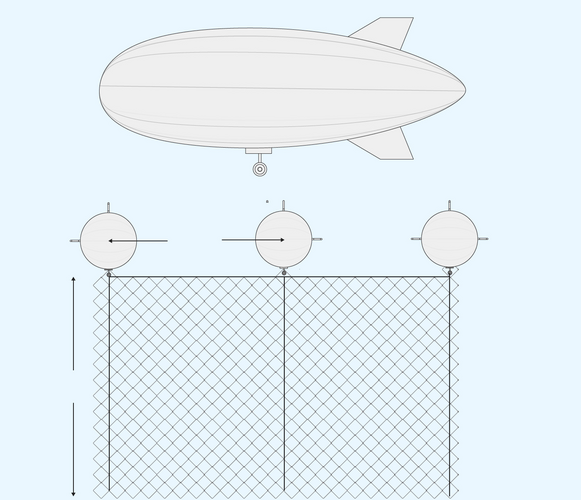
If am not mistaken, similar schemes were proposed back during the Cold War on both sides as part of anti-cruise missile defences.The balloons are designed to launch from hangars, rise quickly in a row and then drop a 250m-tall net to form a defensive cordon.
Polina Albek, the general director of First Airship, told a conference in St Petersburg this week that the balloons had already been tested and that her company had received orders.
She said: “Our main activity is building cargo airships but today, based on the experience of our ancestors, we have created the ‘Barrier’ protection system.”
Photographs of a suspected prototype showed a white balloon with large blue fins at its rear floating above a birch forest and a lake.
First Airship has said that each balloon can float up to 300m above the ground and has a maximum load of 30kg, enough to carry the light net that hangs just above the ground.
The balloons can also be equipped with radar, electronic jammers and video cameras which give 360-degree views with a range of up to seven miles.
Ms Albek said: “These capabilities allow for substantial vertical coverage, creating an effective barrier against low-flying drones that threaten sensitive locations. The drones can’t see the mesh net, it’s too thin for them.”
Grey Havoc in the soviet union in 1989 there was thinking to use balloons as protection from cruise missiles or from bgm 109 tomahawk this system the Russians called the air obstacle system
Last edited:
A Tentative Fleet Plan
I really should change my personal text
- Joined
- 9 April 2018
- Messages
- 1,212
- Reaction score
- 2,833
Similar threads
-
-
-
-
WW1 period (~1900-1920s) experimental and small-known artillery (field, siege, AA)
- Started by Bottleship
- Replies: 55
-

